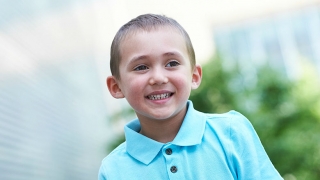Surgical Treatment for Wilms Tumor
Most children with Wilms tumor will require surgery as part of their treatment plan. At Children’s Hospital of Philadelphia (CHOP), your child will be treated by a multidisciplinary team including surgeons, oncologists, radiation oncologists and nurse practitioners, who work together to create a treatment plan specific to your child. You and your child will meet with the treatment team to ensure your family has an opportunity to build a trusting relationship with them. Scans are done prior to surgery to evaluate the extent of the tumor in the kidney and determine whether it has spread to other parts of the body, such as the lungs.
Surgical treatment
At CHOP, the goal of surgical treatment is to remove the entire tumor, if possible, which usually includes removing the affected kidney as well. We strive to minimize the risk of serious side effects and maximize your child’s chances for a full recovery.
As a result, treatment plans will vary somewhat depending on several factors, including the size and type of the tumor and whether your child has one tumor (the most common scenario) or multiple tumors. In rare cases, a tumor may require only surgical treatment. Most patients with Wilms tumor will require chemotherapy after surgical removal of the tumor, and some will need radiation therapy as well. In some cases, chemotherapy is administered prior to surgical intervention.
For children with one Wilms tumor, the surgical team generally will plan to remove the affected kidney and nearby lymph nodes. Removing the lymph nodes is very safe and is an important stage in the treatment plan.
If your child has more than one Wilms tumor, especially if they are present in both kidneys, doctors first give chemotherapy, and then a specialized team that might include a pediatric urologist will attempt to remove as much of the tumor from both kidneys, trying to preserve as much normal kidney as possible.
Day of Surgery
Please consult this page for useful information about parking, checking in and more.
On the day of surgery, you will meet with your surgeon and anesthesia team beforehand. Your child will be given medication to relieve anxiety before they are taken to the operating room. Once in the OR, after the child has gone to sleep, the team will place IVs and administer medication for sedation and pain control. All operations are completed under general anesthesia.
The operation to remove the tumor and affected kidney (a procedure called a nephrectomy) is performed with an abdominal incision that can vary in size depending on the size of the tumor. All sutures are internal, dissolvable and not visible following the surgery. A waterproof surgical glue is usually used to cover and protect the incision, allowing your child to shower and bathe just a few days after surgery.
Your child’s surgery is likely to take a few hours. During the procedure, a liaison will check in with you periodically to provide you with updates.
At the conclusion of the operation, your surgeon will meet with you privately, provide more information about how the surgery went and answer any questions you may have. Most children will stabilize in the recovery room, where you can meet your child following surgery.
Recovery
Your child will then be transferred to the surgical inpatient unit of the hospital, where they typically stay for a few days. Post-operatively, we allow and encourage patients to begin drinking clear liquids. Once clear liquids are well tolerated, we allow patients to eat a regular diet.
Pain is managed with both narcotic and non-narcotic medications and is prescribed based on each child’s individual needs.
As soon as your child is comfortable, able to walk without pain or discomfort, and eat, they will be ready for discharge to home.
If additional chemotherapy or radiation is needed, your child will usually be cleared to begin that treatment within a week or so after surgery.
Follow-up care
After surgery, the need for follow-up care can vary depending on each child’s individual case. Typically, visits with both oncology and surgery are needed to ensure adequate recovery.
